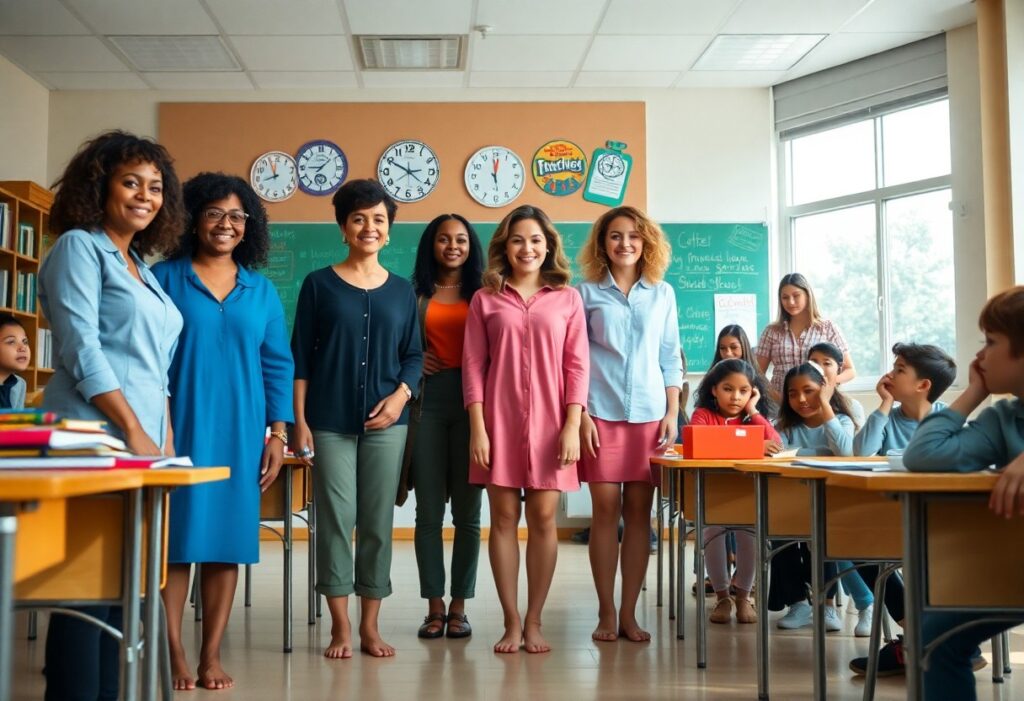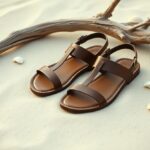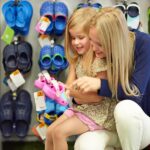
As a devoted educator, it’s likely that you spend the majority of your day on your feet, leading to fatigued and sore feet that can significantly impact your performance and enjoyment of teaching. You understand the crucial role that comfortable footwear plays in your daily activities; however, the shoes you might consider comfortable could actually be contributing to your discomfort. Making the switch to barefoot shoes offers substantial benefits, including enhanced mobility, balance, and agility. Over time, these innovative shoes facilitate the strengthening of your feet, allowing them to function as their own support system, which can lead to improved comfort and overall well-being.
Understanding the Unique Physical Challenges Teachers Face with Their Footwear
The daily responsibilities of a teacher often require extended periods of standing, walking, and actively engaging with students, which can impose significant strain on your feet, resulting in foot pain and exhaustion. Since a large portion of your day is spent upright, it’s essential to assess how your daily activities influence your foot health. By choosing the right footwear, you can greatly reduce the physical stress associated with the demanding nature of your profession, allowing you to concentrate better on teaching and connecting with your students.
Analyzing Daily Teaching Activities and Their Impact on Foot Health
Throughout long hours filled with standing, walking, and actively moving around the classroom, your feet may become overworked and stressed, resulting in discomfort and pain that can detract from your teaching responsibilities. As an educator, you are acutely aware of the necessity of remaining on your feet for the entire day; however, the long-term consequences of wearing shoes that lack proper support can be detrimental. Gaining insight into these effects is crucial for making well-informed decisions about your footwear, ultimately fostering sustainable foot health and enhancing your overall teaching experience.
Emphasizing the Critical Importance of Comfortable Footwear for Educators
For dedicated teachers, selecting the right footwear is essential to avert foot-related issues while ensuring all-day comfort. You need shoes that align with your active lifestyle and provide the necessary support and cushioning for your feet. By emphasizing comfort, you can significantly enhance your ability to engage with students and effectively manage classroom activities, leading to a more rewarding and fulfilling teaching experience.
So, what truly defines a comfortable shoe for teachers? Comfort encompasses much more than just cushioning and support; it also involves allowing your feet to move naturally and breathe. When assessing your options, look for shoes that are breathable, lightweight, and flexible, featuring a wider toe box that enables your toes to spread comfortably. Investing in the right footwear can help alleviate the risk of foot pain and injury, ensuring you remain comfortable and focused throughout the school day.
Identifying the Key Features of Ideal Footwear for Educators
As a committed professional in education, the choice of shoes you make is vital for your daily comfort and performance within the classroom. It’s crucial to select footwear that offers the necessary support and comfort throughout your entire teaching day, allowing you to devote your attention fully to student engagement and lesson planning without the distraction of discomfort.
Essential Features That Ensure Lasting Comfort for Educators
Given the demanding nature of teaching, it’s clear that shoes equipped with features such as breathability, lightweight materials, and flexibility are indispensable for sustained comfort. Your footwear should keep your feet dry and cool, even after long hours of standing and moving around, which helps you to maintain your energy and focus throughout the day.
Grasping the Significance of Breathable, Lightweight, and Flexible Shoes
As an educator, your commitment to providing the best possible experience for your students begins with prioritizing your own comfort. You will require shoes that facilitate unrestricted movement and support natural foot mechanics, and breathable, lightweight, and flexible shoes can effectively deliver these benefits.
To achieve optimal results, opt for shoes that are not only breathable but also lightweight and flexible. This combination will empower you to navigate your classroom and hallways with ease, without feeling restricted or burdened. Furthermore, adequate ventilation is essential, as it helps maintain dryness and coolness, significantly reducing the chances of blisters and other foot-related issues. By choosing footwear that possesses these critical characteristics, you can ensure your feet stay comfortable and supported throughout your busy teaching day, allowing you to focus on what truly matters—providing exceptional education to your students. With breathable, lightweight, and flexible shoes, you can bid farewell to fatigued, sore feet and embrace a more enjoyable and productive teaching experience.

Contrasting Conventional Footwear with Barefoot Shoes: Key Differences Unveiled
If you’re contemplating a shift to barefoot shoes, it’s vital to comprehend how they stack up against traditional footwear. The following table outlines the fundamental differences between these two categories of shoes:
| Conventional Shoes | Barefoot Shoes |
|---|---|
| Narrow toe box | Wider, foot-shaped toe box |
| Raised heel | Non-elevated heel |
| Thick soles and excessive padding | Thin soles and minimal padding |
Identifying the Drawbacks of Traditional Footwear and Their Impact on Foot Health
It is widely acknowledged that conventional shoes can lead to various foot issues due to their constricting narrow toe boxes and raised heels, frequently resulting in discomfort and balance issues. You may discover that wearing such footwear can induce fatigue and pain not only in your feet but also in your ankles, knees, and back, ultimately affecting your ability to teach effectively.
Unveiling the Advantages of Barefoot Shoes for Educators
Transitioning to barefoot shoes can lead to improved mobility and balance, alongside reduced foot fatigue. These shoes are designed to foster natural foot movement, which aids in strengthening your feet and enhancing your overall posture.
While traditional footwear can be detrimental to your foot health, barefoot shoes present beneficial alternatives. By adopting barefoot shoes, you will experience natural and comfortable movement, greatly enhancing your overall well-being. As a teacher, you will appreciate the comfort and support that barefoot shoes offer, enabling you to focus on delivering quality education without the burden of foot pain.

Diving into the Exceptional Benefits of Barefoot Shoes for Teachers
In contrast to conventional footwear, barefoot shoes provide numerous advantages for educators. These benefits include enhanced mobility, improved balance, and increased agility, as well as the gradual strengthening of your feet, all of which contribute to better overall foot health and a reduction in discomfort over time.
Enhancing Mobility, Balance, and Agility in the Classroom
In the classroom environment, barefoot shoes facilitate a full range of motion, allowing you to move more fluidly and comfortably. This natural movement not only enriches your teaching experience but also minimizes the risks of accidents and injuries during your active workday.
Promoting Foot Strengthening Over Time
Achieving stronger feet involves enabling them to engage in natural movements, and barefoot shoes support this by avoiding excessive external arch support. Over-reliance on traditional support can result in weaker feet over time.
Strengthening your feet can yield numerous benefits, such as improved posture, a reduced risk of ankle, knee, hip, and back problems, and enhanced overall mobility. This ultimately makes it easier for you to execute daily teaching tasks, including standing for extended periods, walking, and interacting with students in an engaging manner.

Sharing Insights and Experiences with Barefoot Shoes
Your journey with barefoot shoes can significantly influence your comfort and support levels, ultimately allowing you to move with ease and maintain proper posture throughout your busy workday.
Encouraging Testimonials from Educators Who Chose Barefoot Shoes
From the enthusiastic feedback of fellow teachers, barefoot shoes have shown to enhance balance, mobility, and agility, making them a popular choice among educators.
The Comfort and Support Offered by Barefoot Shoes
If you have previously dealt with chronic foot pain and discomfort due to traditional footwear, transitioning to barefoot shoes can be a game changer.
Indeed, barefoot shoes feature a wider toe box and a non-elevated heel, which can substantially improve your posture and alleviate strain on your ankles, knees, hips, and back. By encouraging natural movement and fortifying your feet, you can experience lasting comfort and support—elements that are vital for teachers who spend their days on their feet.
Choosing the Perfect Barefoot Shoes to Cater to Your Specific Needs
For educators, selecting the right barefoot shoes is crucial to ensure comfort and support during long days in the classroom. You need footwear that facilitates efficient movement, is breathable, lightweight, and flexible, while also providing ample toe space for comfort.
Professional Dress Shoes That Meet Workplace Standards
When dressing in professional attire, it’s essential that your shoes complement your sophisticated style. Seek out dress shoes such as Phoenix leather or Mika that not only comply with your school’s formal dress code but also offer the comfort and advantages associated with barefoot footwear.
Casual Footwear Selections for Everyday Comfort
In more relaxed environments, you can opt for casual shoes that prioritize comfort while maintaining a professional appearance. Styles such as Dillon, Glenn, and Kelso are excellent choices that pair well with both jeans and slacks, providing a stylish yet casual aesthetic.
What sets these casual shoes apart is their exceptional arch support and trampoline-like soles, which create a sensation akin to walking on clouds. With barefoot shoes, you can eliminate foot pain and discomfort, embracing happy feet that keep you energized throughout the day. As an educator, you will appreciate the breathability and lightweight design of these shoes, making them perfectly suited for long hours on your feet.
Summarizing the Benefits of Barefoot Shoes for Educators
It’s clear that barefoot shoes are an outstanding choice for educators, providing an array of benefits, including improved mobility, enhanced balance, and increased agility. Transitioning to barefoot footwear can promote better foot health and lessen discomfort, as they allow your feet to move naturally and gain strength over time. With a variety of minimalist dress and casual shoes available, you can easily find the ideal pair that aligns with your school’s dress code while ensuring your feet remain comfortable throughout the day.
Answers to Your Inquiries: Frequently Asked Questions About Barefoot Shoes for Teachers
Q: What advantages do barefoot shoes offer for teachers?
A: Barefoot shoes present numerous benefits for educators, including improved mobility, balance, and agility. They promote natural movement, support foot strengthening over time, and enhance posture. Additionally, barefoot shoes are lightweight, breathable, and flexible, making them perfect for teachers who spend extended hours on their feet.
Q: In what ways do barefoot shoes differ from traditional footwear for educators?
A: Barefoot shoes markedly differ from conventional footwear. They feature a wider, foot-shaped toe box, a non-elevated heel, and lack excessive external arch support. This unique design promotes natural movement, enhances posture, and strengthens the feet. In contrast, traditional shoes often have narrower fits, raised heels, and excessive padding, which can lead to discomfort, poor posture, and weakened feet over time.
Q: What key characteristics should teachers prioritize when selecting barefoot shoes?
A: Teachers should focus on barefoot shoes that are breathable, lightweight, and flexible. Key features include a wide, foot-shaped toe box and a non-elevated heel. Furthermore, educators should consider comfort, durability, and style to ensure alignment with their school’s dress code. Popular choices include Phoenix leather, Mika, Dillon, Glenn, and Kelso styles, catering to both men and women while providing versatile styling options for various professional settings.
The Article Are Barefoot Shoes the Best Choice for Teachers? Discover the Benefits of Going Minimal appeared first on My Shoes Finder
The Article Barefoot Shoes: Why Teachers Should Consider Minimal Footwear Was Found On https://limitsofstrategy.com
The Article Barefoot Shoes: The Case for Minimal Footwear in Education First Appeared ON
: https://ad4sc.com



Comments are closed